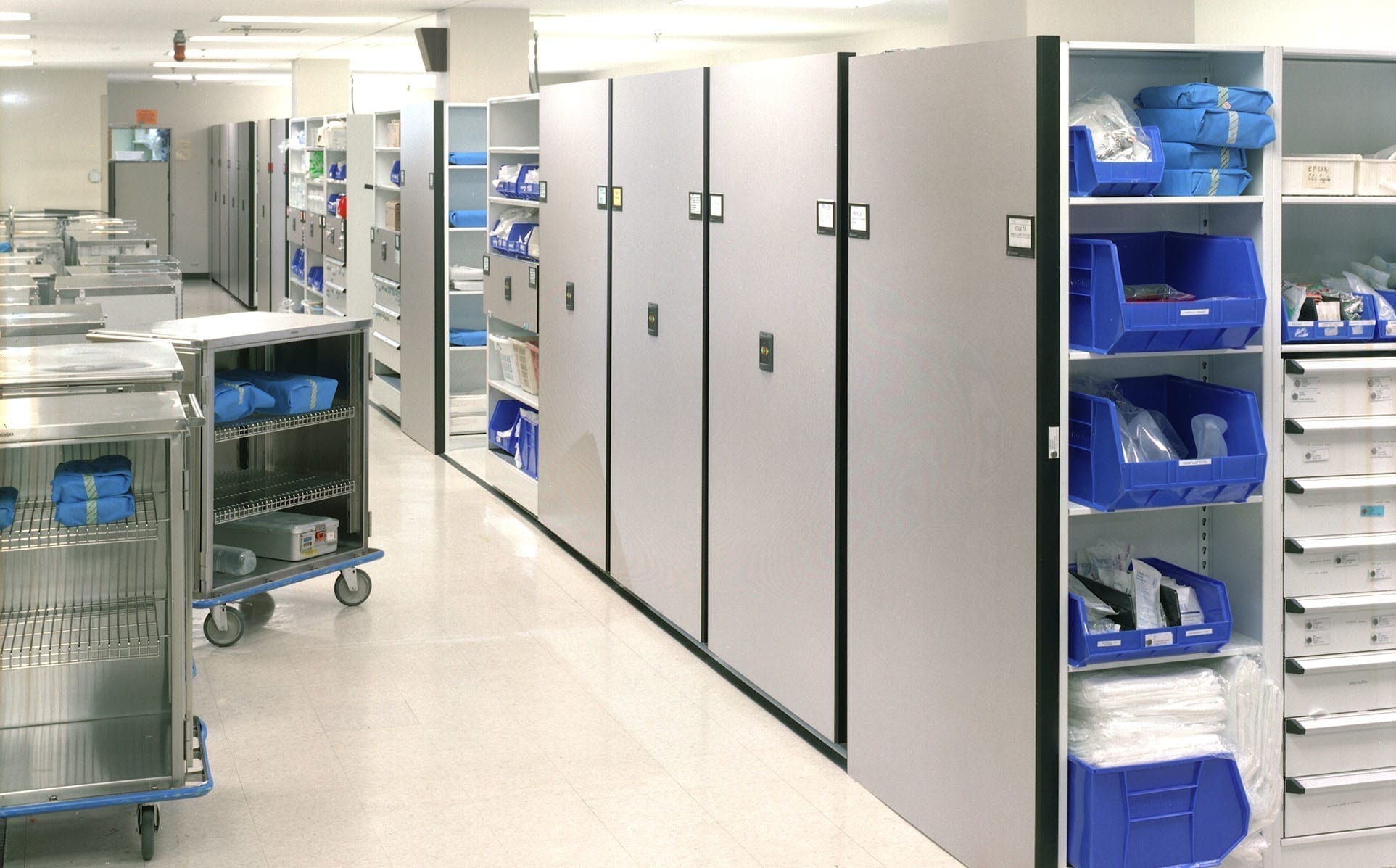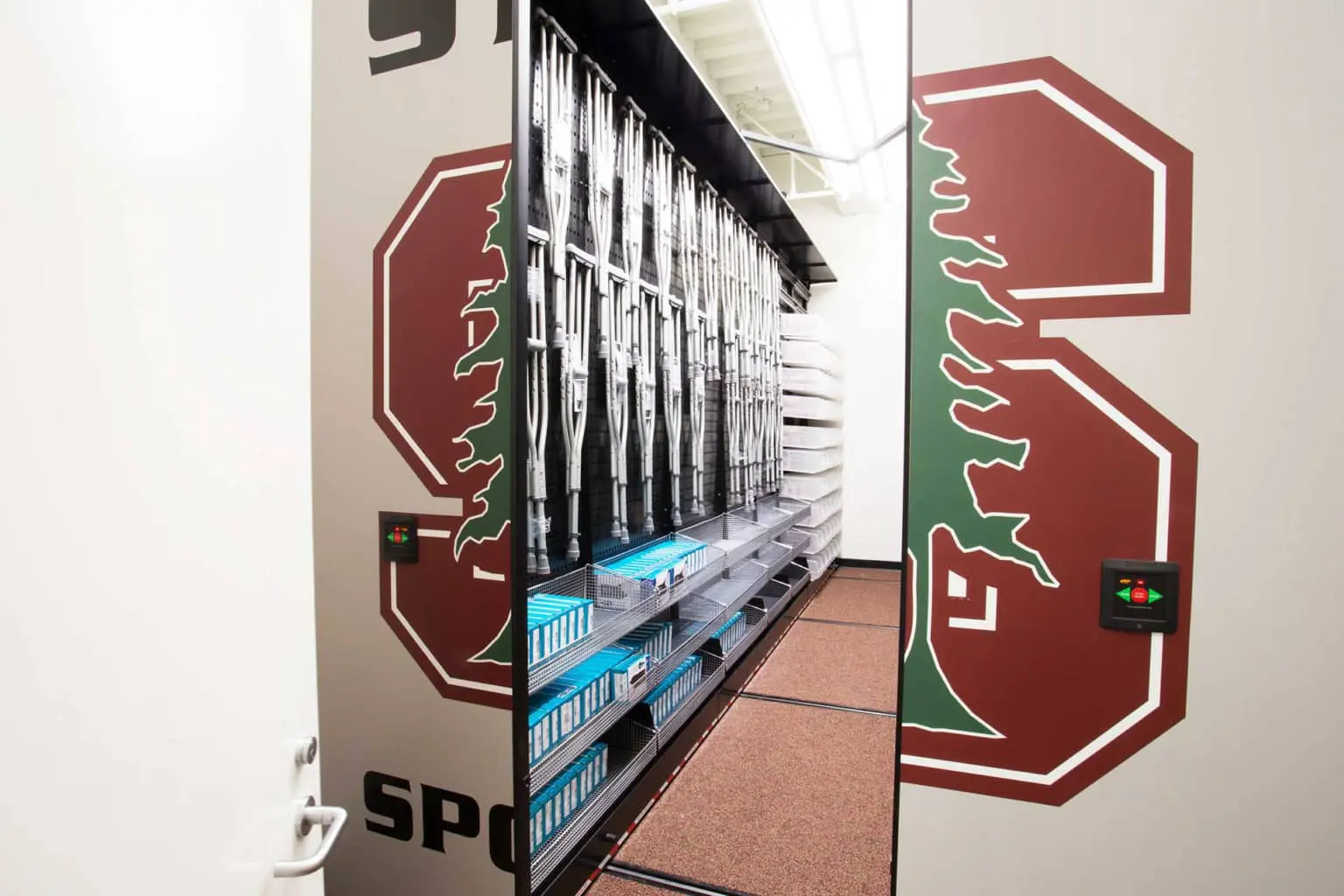
In today’s rapidly evolving educational landscape, institutions constantly seek ways to maximize their resources, with physical space being a primary concern. High-density mobile storage has emerged as a transformative solution, reshaping how educators and administrators organize and utilize their facilities. As classrooms and libraries burgeon with material, ensuring these resources are accessible yet unobtrusive becomes crucial. This is where high-density mobile storage comes into play, blending space efficiency with functional design to support the dynamic needs of educational environments.
Decoding High-Density Mobile Storage
So, what exactly is high-density mobile storage? At its core, it’s a storage system designed to maximize space utilization. Unlike traditional fixed shelving, which can consume significant floor space, high-density mobile storage units glide along rail systems. This eliminates the need for multiple aisles between rows of shelving, allowing for a greater volume of items to be stored in a compact area. When access to a particular shelf is needed, the units can be easily moved to create an aisle where necessary. The result? A dramatic increase in storage capacity within the same footprint. For educational institutions pressed for space, this can translate to more room for collaborative areas, additional seating, or even new functionalities within existing spaces.
The Classroom Conundrum: Storage vs. Space
Every educator knows the struggle: classrooms inevitably accumulate materials as the academic year progresses. From textbooks and project supplies to technological devices and student portfolios, the need for effective storage solutions intensifies. Traditional cabinets and shelves often need to be longer, either consuming too much space or offering insufficient storage capacities. Enter high-density mobile storage—providing a dual benefit of condensing storage areas while making materials more accessible. By optimizing storage, educators can reclaim valuable classroom real estate. This reclaimed space can then serve multiple purposes, such as creating reading nooks, integrating new technology hubs, or fostering group project zones, enhancing the overall learning experience.
Libraries Reimagined Beyond Books
Once primarily a haven for books, today’s libraries are evolving into multifunctional spaces that cater to diverse learning and community needs. While books remain integral, there’s an increasing demand to accommodate technological tools, study spaces, and even interactive zones. This evolution poses the challenge: how do you store an expanding collection without compromising on space? High-density mobile storage is the answer. By minimizing aisles and utilizing height, libraries can efficiently store their collections—be it books, multimedia, or tech tools—while freeing up floor space for reading areas, tech hubs, and collaboration zones. Moreover, the adaptability of these systems ensures they cater to the future needs of the library, whether it’s integrating charging stations or providing dedicated spaces for digital resources.
Storing Tech Safely in the Digital Age
As educational institutions lean more into technology for teaching, there’s a heightened need for safe storage solutions. Laptops, tablets, VR headsets, and other tech tools require secure storage that also considers aspects like charging and ventilation. High-density mobile storage is stepping up to this modern challenge. These storage solutions not only optimize space but can also integrate electrical outlets and ventilation systems. This ensures that tech tools are neatly organized, charged, and ready for use, making the transition from storage to classroom seamless. Furthermore, the customizable nature of high-density mobile storage means configurations can be adjusted based on the specific tech tools an institution adopts, providing a future-proof solution.
Addressing Environmental Concerns
The environmental impact of infrastructure and storage solutions is a growing concern for educational institutions. High-density mobile storage addresses these concerns head-on. By maximizing space usage, there’s a reduction in the need for physical expansion or new constructions, minimizing the carbon footprint. Moreover, many high-density storage solutions in the market prioritize eco-friendly materials and sustainable manufacturing processes. Schools and universities can now choose solutions that align with their sustainability goals, ensuring that as they make the most of their space, they’re also contributing positively to the environment.
Sports and Extracurriculars
Extracurricular activities form the backbone of holistic education. However, the vast range of equipment—from musical instruments to sports gear—requires organized and accessible storage solutions. High-density mobile storage plays a pivotal role here, allowing schools to categorize, secure, and easily retrieve items. For example, a school with a thriving baseball team can now ensure helmets, bats, and uniforms are stored compactly yet remain instantly accessible for game day. Similarly, drama clubs can store their props and costumes systematically, preventing damage and misplacement. This meticulous organization ensures students spend less time searching and more time engaging in their passions.
The Prolonged Cost Efficiency of Mobile Storage
Beyond the functional advantages, high-density mobile storage offers a compelling financial argument for educational institutions. Schools can delay or even avoid expensive building expansions by optimizing space. Additionally, the durability of these systems means reduced maintenance and replacement costs over the long term. When combined with the added value of organized, accessible, and protected assets (from books to tech tools), the return on investment becomes apparent. Furthermore, with modular solutions available, schools can phase their adoption, mitigating immediate financial outlay and planning expenditures in a manner that aligns with budgetary constraints.
Embracing the Future of Educational Storage
As educational landscapes shift, driven by technological advancements, evolving curricula, and changing student needs, the infrastructure must also support it. High-density mobile storage stands out as an innovative solution, adeptly addressing both present and future storage challenges. Whether it’s streamlining library collections, safeguarding precious tech tools, or ensuring sports equipment is always game-ready, this storage solution proves indispensable. By investing in high-density mobile storage, educational institutions are not just optimizing space but are also paving the way for a more organized, efficient, and future-ready learning environment.
FAQs
How does high-density mobile storage maximize space?
By employing movable shelves that eliminate unnecessary aisles, high-density storage increases usable storage area by up to 50%, making it a space-saving powerhouse for educational institutions.
Is it easy to customize these storage units for specific needs?
Absolutely. The modular nature of high-density storage solutions means they can be tailored to fit specific items, from books to basketballs.
How do these storage systems fare in terms of safety?
Modern high-density mobile storage units come with safety features like aisle locks and sensors, ensuring they’re safe for students and staff.
Are there eco-friendly high-density storage options available?
Yes, many manufacturers prioritize sustainability, using recycled materials and eco-conscious processes in producing these storage systems.



